By Tracy L. Barnett and Hernán Vilchez
with production by Arles Porras y Diana Mery Jembuel Morales
Academic support from Álvaro Sepulveda from the Colombia Ethnobiology Society
Ed. note: You can find Part 1 of the series on Resilience.org here.
This story is Part 2 of the transmedia series “Cosmology & Pandemic — What We Can Learn from Indigenous Responses to the Current Health Crisis,” produced with the support of the Pulitzer Center on Crisis Reporting, The One Foundation and SGE. Episode I: The Body as Territory begins the series with three stories from three different indigenous communities in Colombia. For more about this series, see cosmopandemic.esperanzaproject.com.
Covid-19 arrived in Bogotá by plane from Italy on March 7. In the remote Andean indigenous reserve of Guambía, home of the Misaks, people were ready. Dreams and other signs had alerted their elders that something was coming.
Lea este artículo en español AQUÍ.
Their traditional doctors had worked for generations to keep their ancestral medicine alive. But the ancestral would be balanced with the modern, just as the physical would be balanced with the spiritual — because for the Misaks, balance and harmony are the most important medicines.
By March 17, the Misaks had organized a comprehensive response. As the Misak Council Governor at the time, Alvaro Morales Tombé, tells the story, a gathering of 50 traditional doctors met to decide what to do. Haunted by the memories of devastating pandemics dating back to the conquest, including the Spanish Flu of 1918 and as recently as 1945, they launched a multifaceted offensive against the virus.

Diana Mery Jembuel Morales, Misak journalist, wears the atuendo, or traditional dress, of her people. Her traditional hat, called a tampaldkuari, has the form of a spiral, symbolizing the cycle of life. The blue shawl represents tranquility, and the fuscia trim represents the blood shed by the ancestors who fought to defend the territories. (Esperanza Project/Cosmology & Pandemic)
First came the spiritual defense. Together they worked day and night from the hilltops and the sacred lakes with their sahumerios, sending aloft the smoke of natural incense designed to cleanse the air as well as the energy.
They invoked their deities and their fallen ancestors, working around the clock. The traditional authorities, too, responded swiftly and intensively, working the community radio stations day and night to announce the new protocols: those that were being implemented by the government — distancing, handwashing, masks – but also their own, which they put into place immediately.
Indigenous biosecurity
In the first months of the pandemic, as a visitor approached an entry point into the community, they passed through seven controls. One stepped into a tray of white limestone to cleanse the feet. The hands were washed with disinfectant soaps made with their own medicinal herbs. Finally, they underwent a “harmonization” ritual with a sahumerio, a traditional incense. The cool-climate herbs in these mixtures from their native highlands are balanced with hot-climate herbs from their trade partners in the lowlands. If the traveler had symptoms, they were required to take a Covid test and isolate for 15 days.
As a testament to their system’s effectiveness, says Morales, “in the first seven months there was not a single infection.” As of the end of November, there had been only one death related to Covid in the municipality of Silvia, where the reserve of Guambía is located. For economic reasons, however, the controls were rolled back, and as of late May, the number of dead had grown to 15, out of a population of 38,000.
The level of contagion was relatively high, according to Rodrigo Tombé, secretary of health for the municipality, but there were few deaths, because many families stayed in their homes and were treated preventively with medicinal plants from the area. The town had about a third of the mortality rate by percentage of population compared to the closest city, Popoyan: 3.9 per 10,000 individuals had died of Covid in Silvia, compared to 11.1 per 10,000 in Popoyán. The world record at the time is held by Hungary, at 30 deaths per 10,000 people.
So, although there are no studies to prove it, Tombé and others believe that traditional medicine saved lives, particularly during the two peaks of the pandemic, in September 2020 and February 2021. “”Given the number of people infected, we would believe that the fatalities could have been much higher,” Tombé says. “But making that technical comparison, we don’t really have a high mortality.”
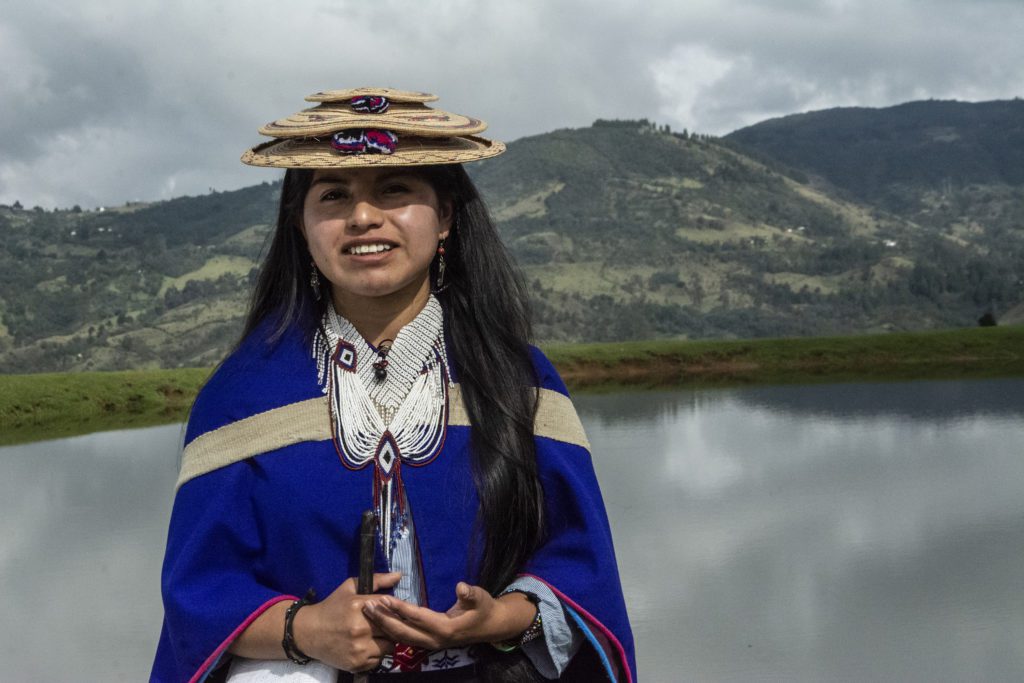
Mama Adriana Velasco, traditional doctor for the Misak people, believes Covid has come to teach humanity a lesson. “It’s offended, it’s angry… it comes in defense of spirituality and the collective consciousness, but it also wants to convey this idea to us: If humans are not interested in life, well, Covid is not interested in humanity, either.” (Esperanza Project/Cosmology & Pandemic)
For Ascensión Velasco Montano, public health coordinator at Mama Dominga Hospital, Covid-19 has had an impact in the way it has brought the value of traditional medicine back into the forefront.
“Many people say, this pandemic has brought something positive… the issue of claiming our identity,” she says. “It’s caused us to take back the subject of our medicinal plants.”
Harmonizing two medicines
Mama Ascención remembers the first months of the pandemic, when health officials were worried that the illness would overwhelm the capacity of the small Mama Dominga Hospital. But the public health campaign, broadcast over community radio stations throughout the region, emphasized the use of the traditional plants in homes, and people responded. Soon smoke was seen drifting all over Silvia as every house lit up its sahumerios, burning plants like pine and eucalyptus, cedar and laurel; meanwhile people made herbal baths and teas and tinctures of ginger, garlic, and local herbs to boost the immune system. Only the most severely ill were taken to the hospital, with most people recovering at home with the help of their plant medicine, and access to pharmaceuticals when necessary.

“We come from the Word, from Water and from dreams; we have an identity, we have a territory, we have an authority and we also have something very special: We are guardians of the moors, the water and the rivers.” — Mama Diana Mery Jembuel, Misak journalist and communicator (Esperanza Project/Cosmology & Pandemic)
“There is a constant communication and relationship between the two medicines to try to balance and safeguard the lives of the people who are in this territory,” said Diana Mery Jembuel Morales, a Misak journalist and social and cultural communicator.
The “harmonization” that greeted the travelers was nothing new; it’s something the Misak have practiced for generations upon entering their territory as a way to cleanse the incompatible energies of the city life and maintain the sanctity of their territory. A striving for balance occurs on every level in Misak society. The traditional approaches to disease control are themselves balanced with Western public health measures. The old ways must be balanced with the new ones, just as the masculine aspect must be balanced with the feminine in the Misak cosmology. This focus on balance has been pushed aside by the industrial, individualist, materialist model of modern society, says traditional doctor Adriana Velasco and other guambianos.
Fighting for their values
Balance and harmony are so fundamental for the Misak people’s way of life that they are willing to go to the streets to fight for it, if necessary – but always peacefully, and with their face masks firmly in place. They did so in September of last year, when they’d had enough of the brutal reminder of colonial rule and toppled the monument of violent conquistador Sebastián de Belalcázar in an emblematic plaza of the Cauca state capital; or in October, when they joined the minga indigena, a peaceful, masked march all the way to Bogotá to demand respect for indigenous rights and those of the Mother Earth; and in the recent national strike against President Ivan Duque’s policies, where they toppled the monument in Bogotá of another conquistador, Gonzalo Jiménez de Quesada, founder of the capital city.
Equilibrium is a part of their origin story, beginning with the male and female lakes their culture was born from: Ñimpé and Piendamó. It’s in the way they dress, the royal blue of their ponchos representing serenity, edged with a fuchsia-colored trim, representing the blood shed to defend their territories. So when news came of the pandemic, they established their own rigorous protocols aimed at keeping the virus out of their territory, with balance and harmony at the core.
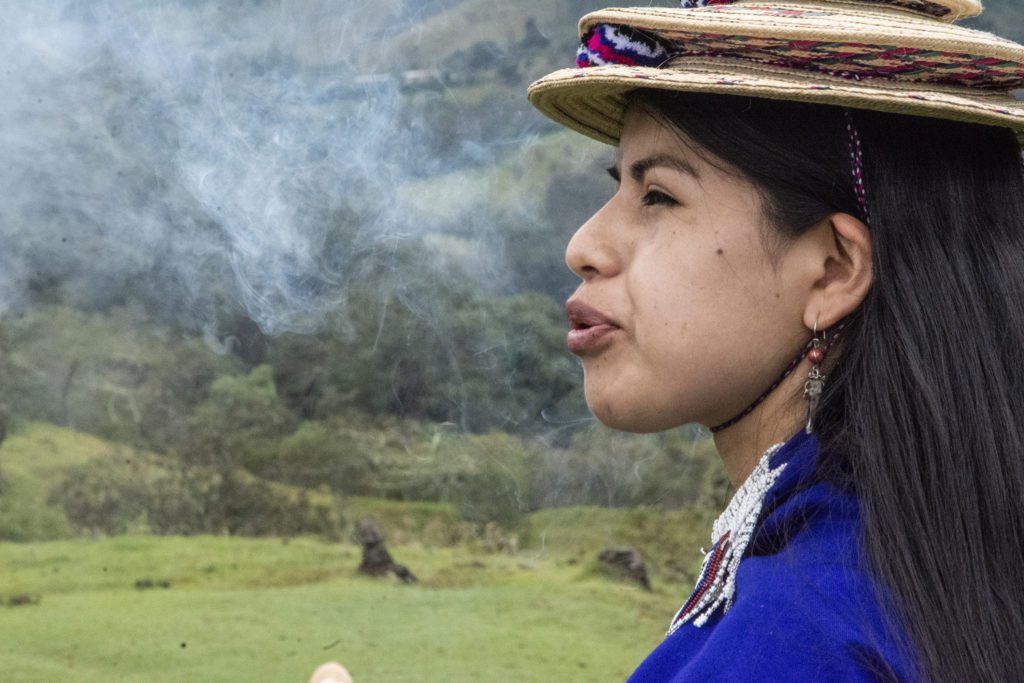
Tobacco is a sacred plant for Mama Adriana, as for indigenous peoples throughout the Americas, used for ceremonial and healing purposes. (Esperanza Project/Cosmology & Pandemic)
Besides the traditional plant medicine, the spiritual dimension has been key to prevention, Jembuel stressed. The Misak people have since the times of their origin story drawn on their dreams to seek guidance for their lives. Now, in the midst of the crisis, she says that is more important than ever.
“We must take care of ourselves with medicinal plants and with dreams and with the calls that our spirits make to us through the body. I believe that you have to know how to balance that, but also try to make your own medicine — not only take the remedy when you are ill, but every day. And if something were to happen in my family, it would be because I myself, as a person, as a human being, have become unbalanced and I have forgotten the teachings that my family’s grandfathers and grandmothers have given me.”
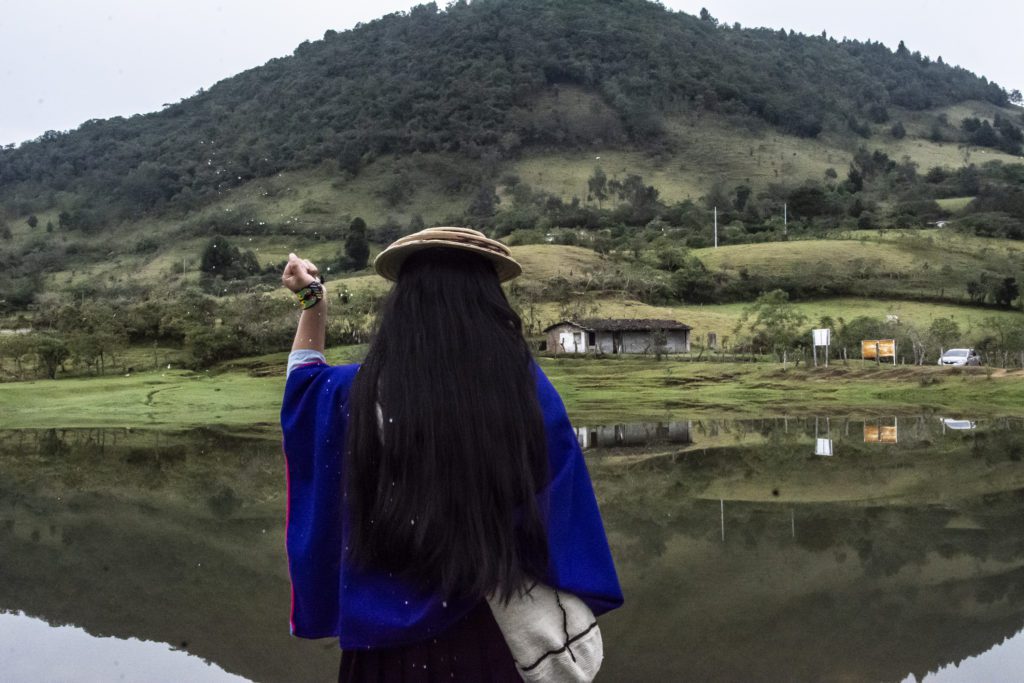
The Misak origin story begins with two lakes: Piendamó, a male lake, and Ñimpi, a female lake. (Esperanza Project/Cosmology & Pandemic)
When traditional doctor Adriana Velasco sees the novel coronavirus in her dreams, it appears as a sad, yet frightening being. Sometimes it’s old and tired and anxious, its face covered with pus-filled cysts. Sometimes it’s angry; it’s had enough of humans disrespecting life. It’s Nature defending itself, she says, and it’s come to re-establish balance on the planet.
“I see and feel it as a spiritual being that has accumulated all the negativity that human beings have thrown at it, just like we always throw waste into the river,”
says Mama Adriana, as she is known to her community, in the Misaks’ Andean indigenous reserve of Guambía in the southeastern Colombia state of Cauca. She sees it as the forces of Nature working together to defend themselves.
“It’s offended, it’s angry… it comes in defense of spirituality and the collective consciousness, but it also wants to convey this idea to us: If humans are not interested in life, well, Covid is not interested in humanity, either. “
Mama Adriana has used everything from ginger and eucalyptus to pine and willow, rue, bay leaf and lemon verbena — even spicy chile — to help strengthen the immune system and also to treat symptoms, making infusions, tinctures and incense. She combines these plants with garlic powder in her sahumerio, filling the house with smoke — not just to purify the air, but also to stimulate a cleansing process in her patient as well as in the home. One day she came home with the symptoms and treated herself immediately with strong infusions of coca leaf and lemon. Fortunately, she says, it passed quickly.
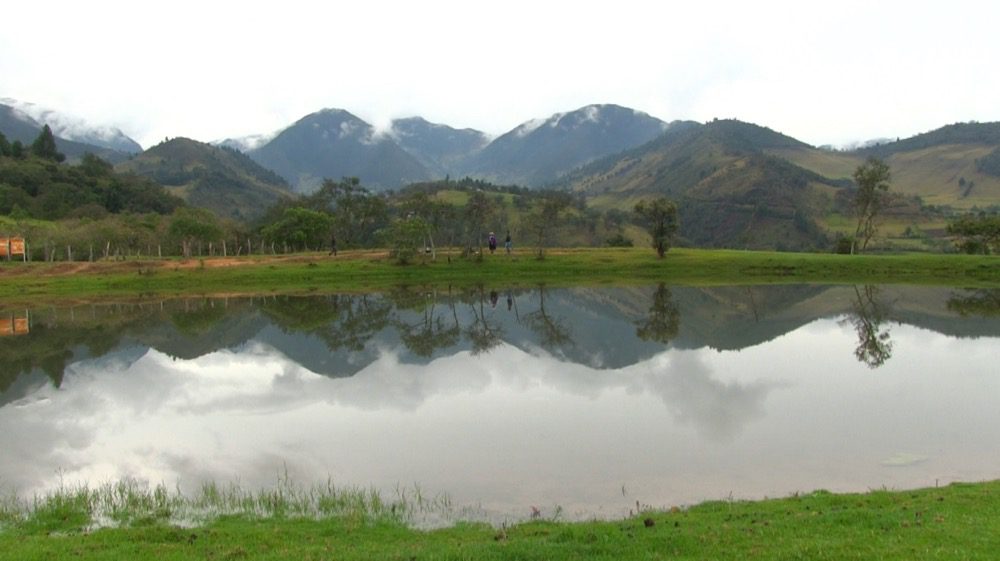
When word came of the pandemic, 50 of the community’s traditional healers gathered here. As the then governor Tata Alvaro Morales tells it: “Fifty traditional doctors gathered in the hills, on the lakes, with incense, with their own medicine, driving away the disease, invoking deities of the lagoons, the spirits of all our ancestors, invoking all of them and fighting all the holy night.” (Esperanza Project/Cosmology & Pandemic)
The pandemic reminded the Misaks of something else, as well, said former Governor Alvaro Morales Tombé. Their elders had told them of how their society was before the conquest, with their own economy, their own health care, their own language – and no epidemics.
“And just as we were fighting to keep Covid from entering our territory, we were fighting for the damage that had been done to us.”
At the time of Belalcázar’s arrival in 1536, there were an estimated 80,000 Misaks. By the time the conquest was complete, there remained only 78. And every time they went to their state capital, a brutal bronze reminder on horseback greeted them.
“How is it possible that in our country, in our state of Cauca, in our territories, we are praising the person who almost did away with the seed of everything? How is it possible that the Colombian system has as monuments the worst assassins in the world?”
Belalcázar had come to represent the same worldview that brought the pandemics of the conquest and the pandemic of today, a way of thinking that is antithetical to the balance they hold as sacred – and so he had to go.
“So we thought, ‘Sebastian has got to get out of our territory, along with the pandemic, so that we don’t keep having pandemics coming from outside,’” said Morales.
“So we organized ourselves, and well-masked and disinfected, we began to march. We had to finally recover our authority in this way. Because now we are not just 78. Now we are 27,000.”
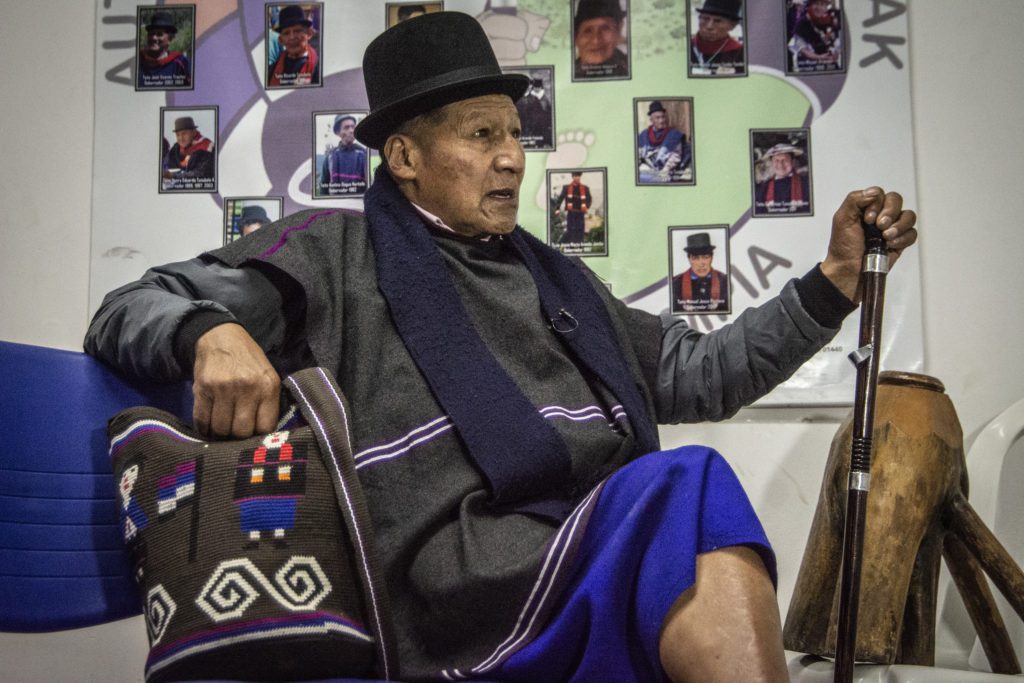
“Just as we were fighting to keep Covid from entering our territory, we were fighting for the damage they had done to us.” Gov. Alvaro Morales Tombé






